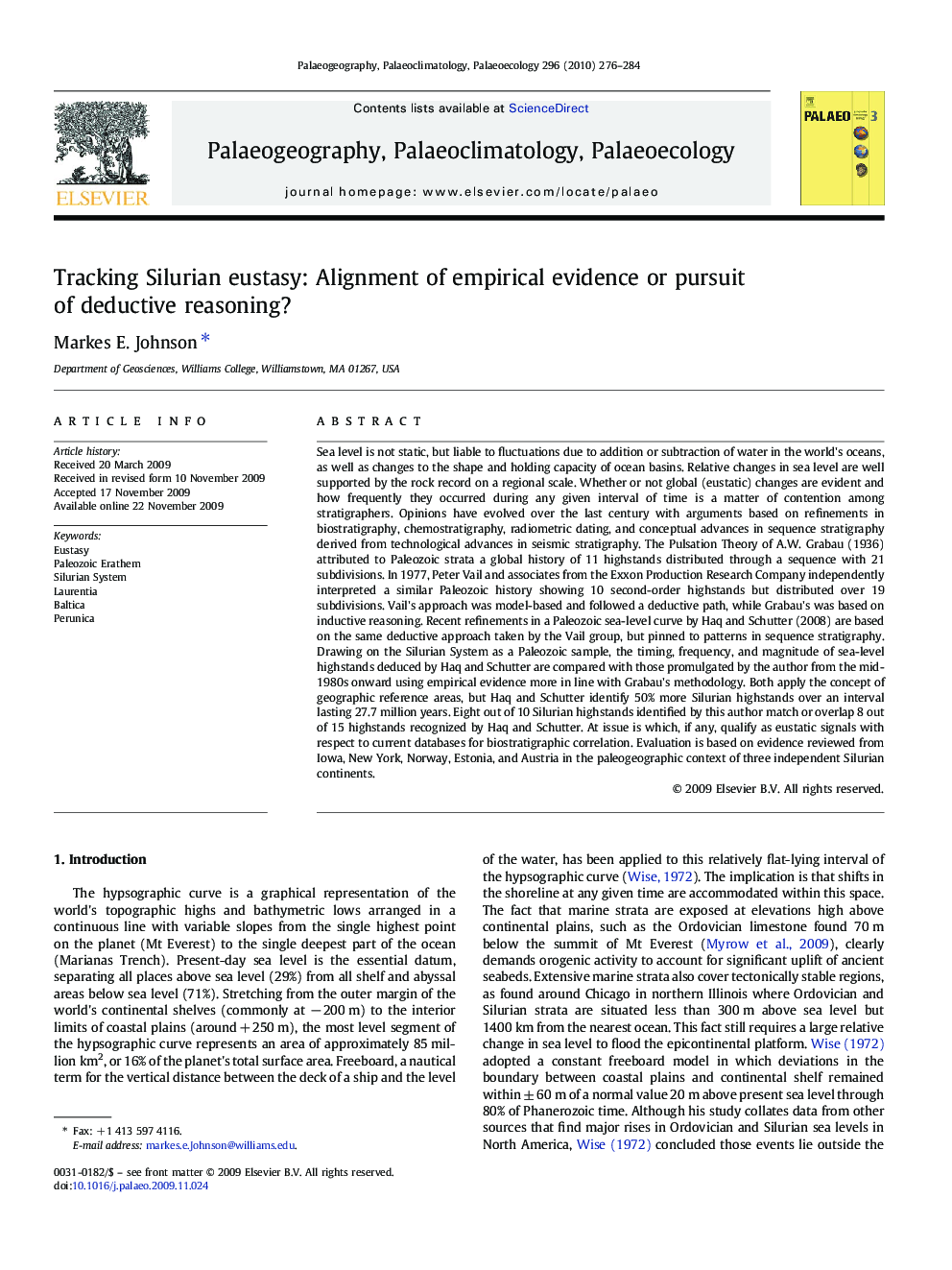| کد مقاله | کد نشریه | سال انتشار | مقاله انگلیسی | نسخه تمام متن |
|---|---|---|---|---|
| 4467594 | 1622269 | 2010 | 9 صفحه PDF | دانلود رایگان |

Sea level is not static, but liable to fluctuations due to addition or subtraction of water in the world's oceans, as well as changes to the shape and holding capacity of ocean basins. Relative changes in sea level are well supported by the rock record on a regional scale. Whether or not global (eustatic) changes are evident and how frequently they occurred during any given interval of time is a matter of contention among stratigraphers. Opinions have evolved over the last century with arguments based on refinements in biostratigraphy, chemostratigraphy, radiometric dating, and conceptual advances in sequence stratigraphy derived from technological advances in seismic stratigraphy. The Pulsation Theory of A.W. Grabau (1936) attributed to Paleozoic strata a global history of 11 highstands distributed through a sequence with 21 subdivisions. In 1977, Peter Vail and associates from the Exxon Production Research Company independently interpreted a similar Paleozoic history showing 10 second-order highstands but distributed over 19 subdivisions. Vail's approach was model-based and followed a deductive path, while Grabau's was based on inductive reasoning. Recent refinements in a Paleozoic sea-level curve by Haq and Schutter (2008) are based on the same deductive approach taken by the Vail group, but pinned to patterns in sequence stratigraphy. Drawing on the Silurian System as a Paleozoic sample, the timing, frequency, and magnitude of sea-level highstands deduced by Haq and Schutter are compared with those promulgated by the author from the mid-1980s onward using empirical evidence more in line with Grabau's methodology. Both apply the concept of geographic reference areas, but Haq and Schutter identify 50% more Silurian highstands over an interval lasting 27.7 million years. Eight out of 10 Silurian highstands identified by this author match or overlap 8 out of 15 highstands recognized by Haq and Schutter. At issue is which, if any, qualify as eustatic signals with respect to current databases for biostratigraphic correlation. Evaluation is based on evidence reviewed from Iowa, New York, Norway, Estonia, and Austria in the paleogeographic context of three independent Silurian continents.
Journal: Palaeogeography, Palaeoclimatology, Palaeoecology - Volume 296, Issues 3–4, 15 October 2010, Pages 276–284